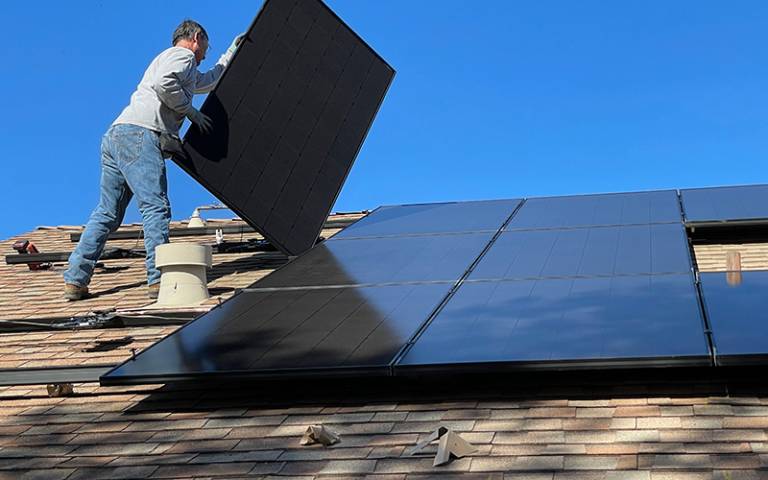Net zero emission energy scenarios and land use
23 May 2023
A new report by UCL Energy Institute researchers looks at the land use implications of net zero scenarios, particularly solar photovoltaics (PV), biomass and onshore wind.

Authored by Dr Daniel Scamman and Professor Mark Barrett, the report was commissioned by CPRE, the countryside charity.
The research analyses the land use implications of renewables in recent leading energy scenarios which aim to reduce the net emissions of greenhouse gases to zero by 2050.
The scenarios considered were developed by the Climate Change Committee, National Grid and BEIS (now DESNZ).
The research focused on three renewables - solar photovoltaic (PV), biomass and onshore wind, and included commentary on other technologies such as transmission and batteries.
The research found that more than sufficient urban solar PV capacity could be located on rooftops and car parks without necessitating the development of solar farms in rural areas. Urban PV on car parks and new and large buildings would be relatively low cost, though PV retrofitted to existing dwellings would generally be higher cost than solar farms.
Onshore wind farms use little surface area for towers and infrastructure but have wider visual impacts. Offshore wind is now increasingly cost competitive with onshore wind and is expected to play a large role in the UK’s future energy mix, though its environmental impacts are currently less well understood and require further research.
In contrast, biomass requires large areas per energy produced compared to solar and wind, and impacts directly on ecosystems. It can compete with land for natural habitats and food production. Biomass was the most complex renewable technology of those studied.
The report showed that the technologies required to reach net zero emissions can have implications for the countryside, but that technical innovations and careful planning can reduce these.
 Close
Close

